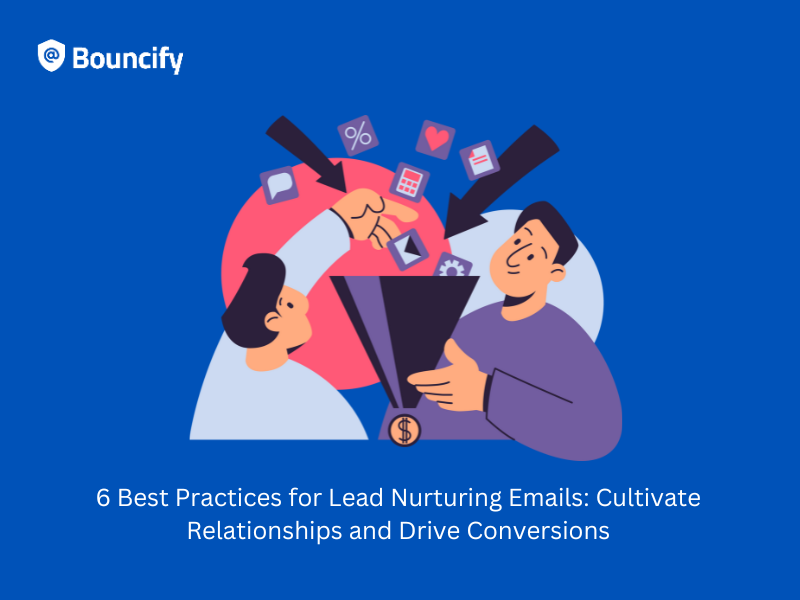6 Best Practices for Lead Nurturing Emails

Lead nurturing is the process of building relationships with potential customers over time by providing them with valuable information and content. This can be done through a variety of channels, including email, social media, and direct mail.
Email is one of the most effective channels for lead nurturing, as it allows you to reach a large number of people at once and deliver personalized messages. However, in order to be effective, your lead nurturing emails need to be well-written and engaging.
Here are six best practices for writing lead nurturing emails:
Personalize your emails.
The more personalized your emails are, the more likely your leads are to open and read them. Use the lead's name in the greeting, and tailor the content of the email to their interests and needs.
Provide value.
Your lead nurturing emails should provide value to your leads. This could include educational content, exclusive offers, or discounts. The goal is to give your leads a reason to keep reading your emails and stay engaged with your brand.
Be consistent.
Nurturing leads takes time and effort. To be successful, you need to be consistent with your email marketing efforts. Send emails on a regular schedule, and make sure that the content is relevant to your leads' interests.
Track your results.
It's important to track the results of your lead nurturing campaigns so that you can see what's working and what's not. This will help you optimize your campaigns and get better results over time.
Use lead nurturing software.
There are a number of lead nurturing software programs available that can help you automate your email marketing campaigns. These programs can save you time and effort, and they can help you improve the results of your campaigns.
Get creative.
There are a number of ways to get creative with your lead nurturing emails. You can use images, videos, and infographics to make your emails more visually appealing. You can also use surveys and polls to get feedback from your leads and learn more about their needs.
By following these best practices, you can write lead nurturing emails that are effective at building relationships with potential customers and converting them into paying customers.
Here are some additional tips for writing effective lead nurturing emails:
- Keep your emails short and to the point. People are busy and don't have time to read long emails.
- Use clear and concise language. Avoid using jargon or technical terms that your leads may not understand.
- Use a strong call to action. Tell your leads what you want them to do, whether it's visiting your website, signing up for a free trial, or making a purchase.
- Test and optimize your emails. Send different versions of your emails to different segments of your leads and see which ones perform best.
In conclusion, implementing these six best practices for lead nurturing emails, along with the use of a reliable email verification service like Bouncify, can significantly improve your engagement and conversion rates. By segmenting your audience, personalizing your emails, providing valuable content, using automated workflows, optimizing for mobile, and testing your campaigns, you can nurture leads effectively and guide them towards becoming loyal customers. Incorporate these practices into your email marketing strategy to cultivate strong relationships and drive conversions with confidence.